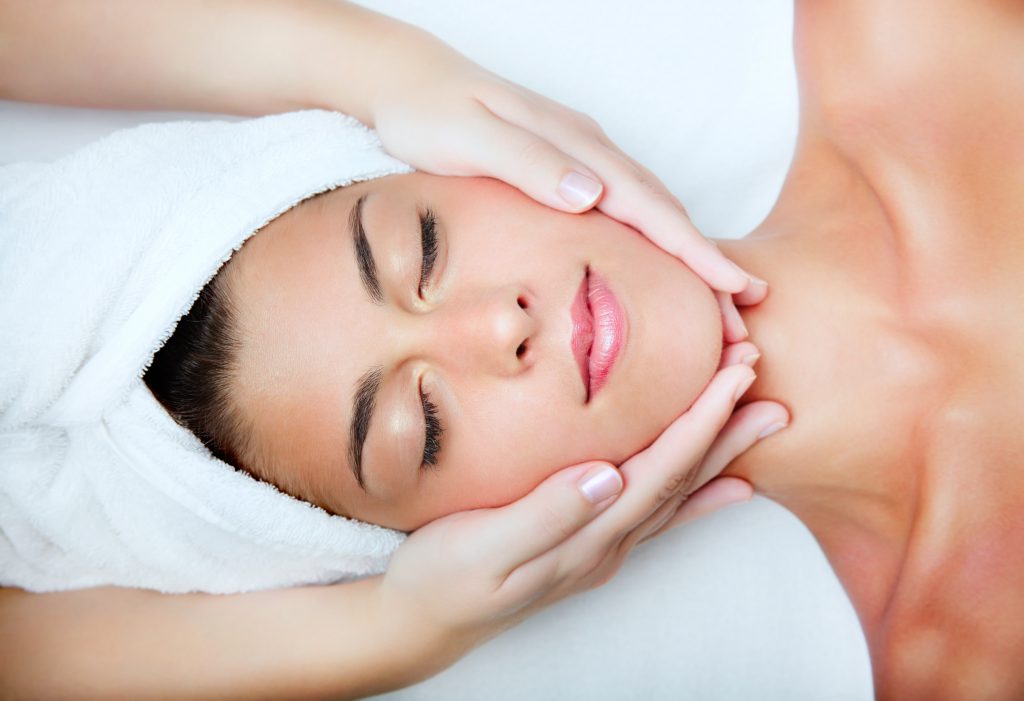Many women experience some problems with proper skin care. Not everyone knows how to choose cosmetics, which formulas to use and which products to avoid. However, there are rules of skin care and recommended cosmetics that help with everyday face care.
 Skincare products should match skin type
Skincare products should match skin type
In order to make your skin beautiful, choose cosmetics that meet the needs of your skin. The type of skin as well as its features should be taken into account:
- Oily skin – its main characteristic is shiny skin. The skin’s sebaceous glands overproduce oil (sebum), its pores appear larger. Oily skin is prone to blackheads, acne, but mimic wrinkles appear relatively late.
- Dry skin – it does not shine like the type described above, instead, it’s matte, thinner and more delicate. Wrinkles appear faster, sometimes even before one’s 30s. Pores are almost invisible.
- Normal skin – this is every girl’s dream. This skin type has medium pores, it might be oily in the T-zone. Generally, this type is resistant to external and internal factors.
- Combination skin – as the name suggests, this skin type combines the features of the above three types. The owners of this type may have larger pores in the T-zone, more shiny skin in some areas of the face, also blackheads and acne might appear from time to time. Typically, combination skin is not prone to premature aging.
All of these features should be taken into account when choosing skin care products. If you use inappropriate products, you can get an opposite effect: the condition of your skin is not improved but it can even get worsened. For this reason it is very important to match the care products to the type of your skin. In general, if you have normal skin, you can create a skincare program yourself. People with dry, oily and combination skin should visit a specialist – a beautician or a dermatologist. Keep in mind that daily care program should consist of three stages: cleansing, toning and nutrition.
How to take care of normal skin?
You should wash your clothes, towels and sheets only with detergents lacking strong substances and fragrances. All you need to do is exfoliate your face once a week, avoid alcohol-based products in daily care as they dry your skin. A better solution is to use preparations with camomile, aloe, marigold or tea tree. A day cream should contain a UV filter to prevent overdrying, wrinkles and discolouration. Also, to moisturise your skin at home, it’s better to use non-occlusive agents, so those which do not form a sticky layer on the skin.
How to take care of oily skin?
Oily skin requires special care that will not increase the activity of sebaceous glands and dry the skin. Another important feature to be remembered about this skin type is that it has low concentration of linoleic acid. As a result, the epidermal barrier less protects the skin from irritations and inflammations. Therefore, you should take care of your skin following some basic rules:
- Clean your skin thoroughly.
- Fight against bacteria.
- Reduce the activity of sebaceous glands.
- Regularly moisturise the skin.
In everyday care, it’s not recommended to use a classic soap and exfoliate the skin two or three times a week. It’s better to avoid toning cosmetics with alcohol. For it, you should use toners and lotions with plant extracts, in particular, with camomile, calendula or aloe. For moisturising oily skin, it’s best to use light formulas with soothing ingredients.
How to care for of dry skin?
Dry skin can be an innate feature, genetically inherited, but it can also appear in the course of life. The level of sebum production is related to the action of hormones – as the menopause approaches, dryness increases. It can also be the result of improper care, for example, frequent scrubs. Dry skin care should be very delicate. When cleaning, it is not recommended to use cleaning agents that give a lot of foam, that is, wash lipids from the skin. The cosmetic used should contain oils and other fat components. Also, washing the face with hot water is not a good idea either because it irritates, dries or enhances the production of sebum. In the case of keratosis, it’s best to use emulsions or creams with acids (salicylic, citric, glycolic, malic). It’s recommended also to regulate the appropriate air humidity and make sure the diet is full of fatty acids.
How to take care of combination skin?
When it comes to combination skin, it’s important to clean the T-zone and moisturise the cheeks. If there are some inflammations on your forehead, chin and nose, then you should give up scrubs. Proper care of combination skin involves also proper nutrition. Cosmetics with such features should be used only on some parts of your skin. For example, masks and drying creams should be applied to the areas with increased activity of the sebaceous glands, but creams with a strong moisturising effect should be applied to the cheeks and forehead.



Leave a Reply